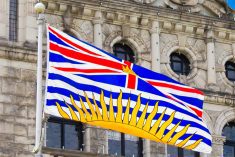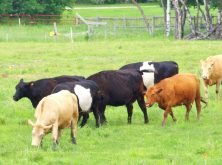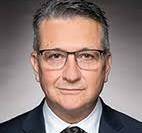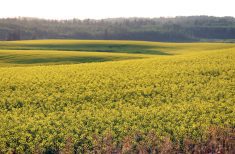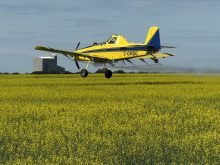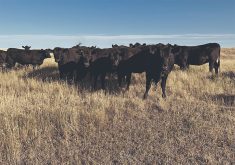REGINA — Saskatchewan is about to enter a formal election campaign for an Oct. 28 vote.
The writ had not been formally dropped as of Sept. 23 but was expected no later than Oct. 1.
The Western Producer asked organizations what they had on their wish lists for those vying to govern.
Read Also

Alberta eases water access for riparian restoration
Alberta government removes requirement for temporary diversion licence to water plants up to 100 cubic metres per day for smaller riparian restoration projects
SSGA president Jeff Yorga said the main priority for the livestock industry is a better risk management program, recognizing that it’s a federal-provincial program.
“There’s a lot of people talking around the edges and nobody has the fortitude to get it done,” he said.
“I’m very confident that that’s the reason that the livestock industry is in the state that it’s in.”
Yorga said cattle producers need business risk management tools that allow them to get through the dry years and still be competitive.
Cow-calf producers have challenges with AgriStability because it’s more difficult to report. Compared to a bin of canola, for example, they have to keep track of calves, yearlings, cows and bulls and where they all went.
“You have to have that from five years ago before you can apply for the program,” he said.
That means tracking information constantly because it’s impossible to do at the end of a year.
“We tried to do it with AgriStability, and they said basically that our records aren’t good enough. And we’re purebred operators. Like, we know where everything is. That’s a big barrier,” Yorga said.
Additionally, it’s more difficult for cow-calf producers to build margins.
Another priority is to move toward satellite-based forage insurance. Yorga said it appears that the Saskatchewan Crop Insurance Corp. is on board, and western provinces are, too, but it just isn’t getting over the finish line.
“The data is there. The infrastructure is there and it’s ready to go. I think it would be a tool that would help producers significantly, especially in these drought years,” he said.
Finally, SSGA continues to push for cost-sharing premiums for livestock price insurance.
“We want Saskatchewan to lead on these issues,” Yorga said.
“Everybody knows right now that the federal government doesn’t see agriculture in Saskatchewan as a priority, and so we need our provincial government to push forward an agenda that betters the ag industry here.”
The organization representing the province’s 295 rural municipalities has its priorities grouped into health care, infrastructure, agriculture and rural crime.
Acting president Bill Huber said agricultural issues are clearly important, given the province has 43 per cent of the arable land in Canada. Concerns about strikes and non-tariff trade barriers such as China’s canola dumping investigation are matters for the federal government, but he said farmers appreciate the provincial government’s efforts to develop new markets and expand trade opportunities.
However, all the production has to leave the province and get to port on roads that need a lot of maintenance and rehabilitation.
The Rural Integrated Roads for Growth (RIRG) program, a partnership between SARM and the provincial highways ministry, has been around for a long time, but funding has declined significantly.
“Our funding a number of years ago was in the $40 to $45 million range and was reduced to $25 million and then down to $15 million and $16 million,” Huber said.
“We’ve got a little boost this year. It was up to $17.4 million.”
However, with inflation over the last five years as high as 35 per cent at one time, RMs can’t keep up.
Huber said bridges cost between $1 and $2 million, meaning only two or three can be rebuilt in a year.
SARM also contributes $1,300 to $1,500 per kilometre, depending on weighted truck counts, for the Clearing the Path Program to maintain primary weight access.
“There’s just not enough money there. We appreciate the government giving what we’ve got, but we’ve got to ask for more,” he said.
“I think this would be a number one priority for us.”
Much of the RIRG money comes from the provincial gas tax, and Huber is already concerned about promises made by NDP leader Carla Beck that she would cut that tax if elected.
“Sure, it would be great for some of the urban residents to get a little bit of cheaper gasoline when they fill up at the pumps, but what’s it going to do to our rural infrastructure?” he said.
SARM supports the RCMP and has had many questions about the incoming Saskatchewan Marshals Service (SMS), which is expected to add 70 marshals to support the RCMP.
Huber said SARM was happy to learn the SMS won’t be charging RMs for its service. It also met with the Saskatchewan RCMP assistant commissioner Rhonda Blackmore and liked the efforts the force is making to be more visible in smaller communities.
However, repeat offenders in particular continue to cause problems in rural areas, and governments have to continue to fund efforts on that front.
SARM supports expanding pharmacists’ scope of practice and other measures to help rural people access better care. Huber said there will be ongoing requests of government to do more.
Formed earlier this year to advocate for wetland conservation, members of Wetlands for Tomorrow include several stewardship groups: Public Pastures – Public Interest and the Saskatchewan Environmental Society.
They coalesced after learning of the Water Security Agency’s plan to allow the drainage of 2.3 million acres.
“The red flags went up for us. We were really concerned about crashing of biodiversity, water quality downstream, so we said, ‘let’s get together,’ and our goal is just to create a conversation,” said Aura Lee MacPherson.
“The election gives us an opportunity to do that.”
She said the members have canvassed others, including farmers and First Nations, to come up with a single question for candidates.
“The question is, ‘Saskatchewan is the only province without a wetland policy. How will your government protect water and water quality for all?’ ” said MacPherson.
She cited a study noting the “the first known occurrence of marked blued discoloration of the ice and water in highly eutrophic prairie lakes during winter 2021” near Fort Qu’Appelle as a water quality concern.
The Buffalo Pound Water Treatment Plant has also said WSA is jeopardizing the plant’s ability to provide high quality and safe drinking water to its customers, including Regina and Moose Jaw, and should carefully plan its agricultural drainage policy to prevent deterioration.






